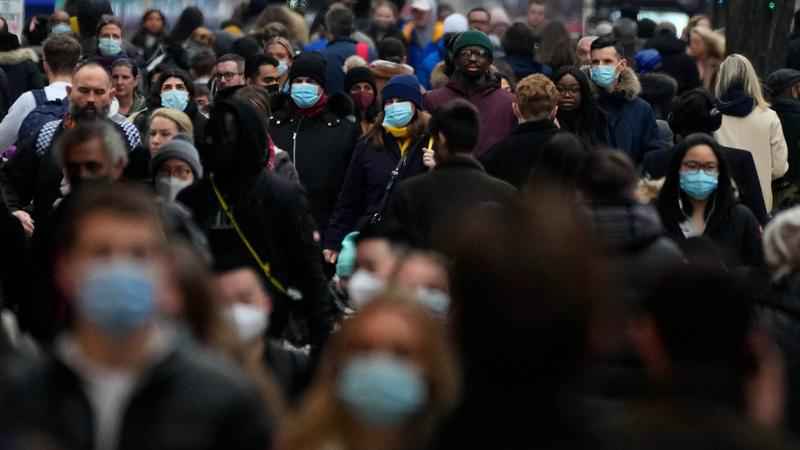Omicron decline on the horizon? Minnesotans should keep guard up, doctor says
[anvplayer video=”5082916″ station=”998122″]
Call it "Mission Difficult": coping with COVID and stopping the omicron variant.
"We need to not just hope that it will happen around the corner,” says Dr. Beth Thielen, an M Health Fairview infectious disease physician. “But really take active steps to reduce our circulation right now.”
Now, there may be some hope in that fight. In South Africa — where the variant was first identified — and the United Kingdom, case numbers are dropping fast. Experts suggest the highly contagious omicron is running out of people to infect.
In New York, case numbers are also on the way down.
"Cases are slowing down, rate of increase is slowing down, but they are still high,” Gov. Kathy Hochul told reporters. “We are not at the end, but I wanted to say to me this is a glimmer of hope."

FILE - Shoppers walk down Oxford Street, Europe's busiest shopping street, in London, Dec. 23, 2021. Scientists are seeing signals that COVID-19?s alarming omicron wave may have peaked in Britain and is about to do the same in the U.S., at which point cases may start dropping off dramatically.[AP Photo/Frank Augstein, File]
But Thielen cautions that omicron remains the biggest driver of COVID-19 cases in Minnesota. The news of falling cases is good, she says, but people shouldn’t drop their guard.
“Europe is not the United States, and the United States is not Minnesota,” she explains. “You know, I would love for that to portend a drop where we are. I think we need to plan for the worst, and hope for the best.”
Already cities, venues and health care providers have turned to more stringent precautions.
Minneapolis and St. Paul last week reinstituted indoor mask mandates. The Guthrie Theater announced Tuesday it’s canceling performances due to omicron concerns.
Mayo Clinic and Allina Health are also limiting visitor access. Mayo Clinic has a one visitor per day per patient policy. Allina Health’s visitor status is now at red, which means no visitors, with limited exceptions.
That includes visiting patients under 18, newborns, labor and delivery and compassionate care — patients whose health is severely declining or in surgery. Allina is also allowing in support people helping those with an impairment or disability.
How concerning is the situation in Minnesota?
Hsieng Su, Allina Health’s Senior Vice President and Chief Medical Executive Monday released a statement, which said in part:
“The omicron variant appears to sharply spike and then decline. According to the models, things will likely get worse later in January, before we see them get better. We need everyone working together, to get through this peak.”
Allina says in the first five days of 2022, an average of 100 staff members per day were removed from work because they were COVID-positive or awaiting tests or test results.
Similar conditions are also happening at a hospital in New Jersey.
“We saw numbers going up dramatically a few weeks ago,” says Dr. Stephen Brunnquell, the president of Englewood Health Physician Network. “We had a number of staff out — almost 300 at one point — which really strained our capacity to take care of people. We’re all exhausted.”
Thielen says vaccination, the use of masks, and distancing are helping.
"We’ve been hit in the Twin Cities quite hard,” Thielen notes. “But there are still pockets around Minnesota, particularly in Greater Minnesota where vaccination rates are substantially lower."
But she worries that vaccination rates are inconsistent, and she’s especially concerned about children.
“The American Academy of Pediatrics says only 25% of children aged 5 to 11 have received a single dose of vaccine,” Thielen says. “That’s a real large vulnerable population of children that we still need to work to get vaccinated.”
To encourage more of that age group to get vaccinated, the state is now offering a $200 Visa gift card if children get their two shots in January and February.
Finally, she says now is not the time to give up this COVID fight.
“Widespread use, uniform use of a well-fitting mask does reduce the risk of transmission,” Thielen said. “And I think we can’t just throw up our hands and admit defeat. I think we need to double down our efforts to deploy these strategies that work to reduce the community spread."